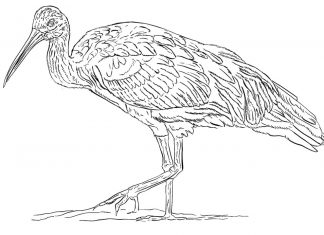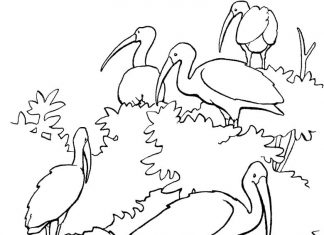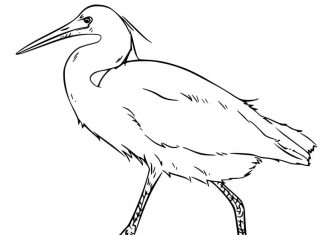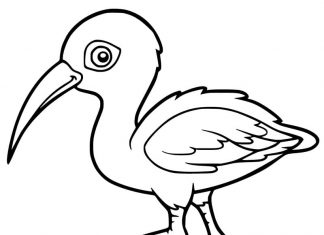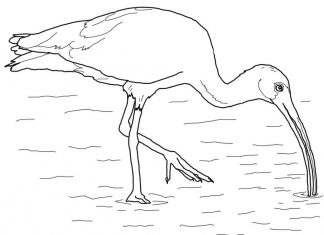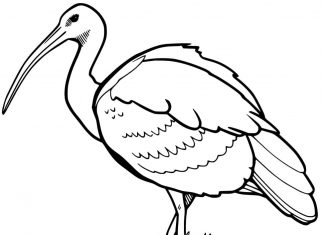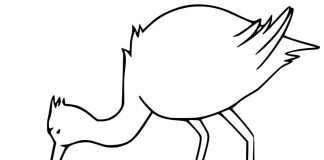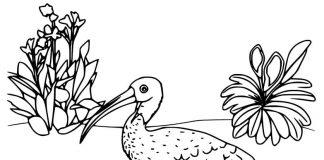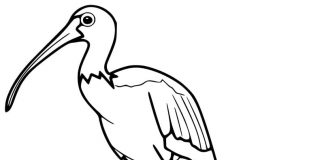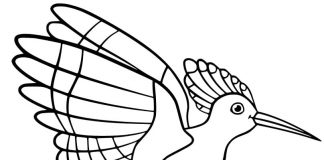The ibis is a genus of birds in the ibis family (Threskiornithidae), including a variety of species found throughout the world.
Ibis Bird Coloring Book
information
- Appearance: Ibis have a long beak curved into an "S" shape, long legs and often distinctive feathers on their heads. Their plumage can range in color from white to brown or black.
- Occurrence: Ibis are found on all continents except Antarctica. They inhabit a wide variety of habitats, from wetlands and marshes to savannas and forests.
- Living environment: Ibis often live near freshwater, wetlands, marshes, rivers and lakes. Most species have a preference for wetlands.
- Nutrition: Ibis are opportunistic birds that feed on a variety of foods, depending on availability. Their diet can include fish, amphibians, insects, small mammals, and aquatic plants.
- Breeding behavior: Most ibis species are social and form nesting colonies. They create peculiar "engineering works," like large nests made of branches and reeds on trees or the ground.
- Nesting colonies: Ibis living in colonies often derive benefits from this communal lifestyle. Defending together against predators, exchanging information about the location of food or basking their offspring together can be beneficial.
- Cultural symbolism: In different cultures, ibises were considered symbols with different meanings. In ancient Egypt, ibises were considered sacred birds associated with the goddess of wisdom and magic, Hathor.
- Threats and protection: Some ibis species may be at risk of extinction due to habitat destruction, hunting or other factors. In response, many organizations are working to protect these birds and their habitat.
- Impact on the ecosystem: Ibis play an important role in aquatic ecosystems, helping to control populations of insects, fish and other aquatic organisms.
- Diversity of species: The ibis genus includes many species, and their appearance, behavior and habitats can vary widely. The ibis genus includes both smaller and larger birds.
trivia
- Symbol in ancient Egypt: The ibis was a very important bird in ancient Egypt. It was considered a representation of the god Thoth, the god of wisdom, writing and learning. Egyptians considered the ibis a sacred bird and paid tribute to it.
- Beak shape: The characteristic curved shape of the ibis' beak is adapted for finding food in mud and water. This beak enables them to pick out fish, crustaceans and other small organisms from wet areas.
- Thermoregulatory capabilities: Some species of ibis, especially those living in hot climates, exhibit thermoregulatory abilities by spreading their wings and exposing them to the sun or wind. This helps them maintain an appropriate body temperature.
- Rapid feather growth: Ibis usually take only a few days to renew damaged feathers. The rapid growth of feathers is especially useful for birds that may become damaged while foraging in harsh environments.
- Occurrence in popular culture: Ibis have also appeared in popular culture. An example is the character "Winter Ibis" (Thoth Amon) from the "Conan the Barbarian" universe, created by Robert E. Howard.
- Ibis and breeding colonies: Breeding together in large colonies has many advantages, such as better protection from predators and sharing information about food resources. However, nesting colonies can also be a source of competition and aggression between birds.
- Wanderings of the ibis: Some ibis species undertake long seasonal migrations in search of food and suitable breeding conditions.
- Effective pest hunters: Because of their diet, which often includes insects, crustaceans and small reptiles, ibises can help control pest populations in their environment.
- Life expectancy: Ibis can live quite a long time. They can live up to more than 20 years in captivity, while their life expectancy in the wild can vary depending on the species and environment.
- Patterns on the wings: In flight, ibises sometimes display beautiful patterns on the underside of their wings, which are visible when they spread their wings in flight.

